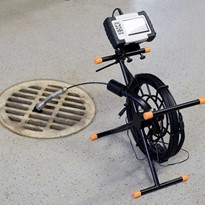What is a borescope inspection tool?
A borescope is a tool designed for inspecting hard-to-reach areas in factory machinery. Its flexible tube allows it to access narrow, hidden spaces, making it essential to detect structural issues early and prevent significant problems. Borescopes can be customised with various camera sizes, articulating heads, and lights for better visibility.
Borescopes are widely used in automotive, aviation, manufacturing, and power generation industries. In power plants, they are crucial for inspecting critical equipment like steam turbines, gas turbines, generators, and the inside surfaces of boiler tubes and pipes.
Types of Borescope Inspection
There are various types of borescopes, and their operation may vary slightly depending on the type chosen. Here are the types of industrial borescopes for inspection that you need to consider.
Video Borescope
A video borescope, also called an “inspection camera,” is similar to a flexible borescope but has a macro video camera at the end of the tube. It can capture video and still images in hard-to-reach or dark spaces within equipment and engines. The camera sends the inspection image to a video processor and displays it through the insertion tube. The ability to capture video or still images and adjust the viewing position is a significant benefit of the video borescope
Key Features:
-
Internal Wiring for Video Transmission: Video borescopes use internal wiring to transmit video images from the distal tip to the unit’s base instead of using fibre optic cables.
-
LCD Screens: Commonly equipped with LCD screens for real-time display of the inspection area.
-
Image and Video Capture: Capable of capturing high-quality images and videos, which can be stored and reviewed later.
-
Articulation: Available in both articulating and non-articulating versions, with some models offering joystick or knob control to change the viewing position.
-
Light Source: The insertion tube includes a light to improve visibility in dark areas of the inspection area.
-
Digital Connectivity: The latest models may include features like Wi-Fi, Bluetooth, USB, and rechargeable lithium batteries for enhanced functionality and ease of use.
-
Macro Video Camera: At the end of the flexible tube, the camera captures detailed images and transmits them electronically to the video processor and display.
Applications:
-
Remote Visual Inspection (R.V.I.): Used for inspecting hard-to-reach areas in equipment, engines, boilers, and other confined or dark spaces.
-
Industrial Inspections: Essential for inspecting internal components of machinery, engines, turbines, and other industrial equipment.
-
Maintenance and Repair: This helps technicians diagnose issues without disassembling equipment, saving time and reducing the risk of damage.
Benefits:
-
Superior Image Quality: It provides better image resolution and clarity than fibre scopes, making it easier to detect potential issues during inspections.
-
Video and Image Capture: The ability to capture and store images and videos is a significant advantage for documentation, review, and sharing with others.
-
Cost-effective: Using electrical cables instead of complex fibre optic waveguides, video borescopes can be more affordable while offering high-quality images.
-
Versatility: Features like articulation, digital connectivity, and rechargeable batteries make video borescopes more flexible and functional for various inspection tasks
-
Ease of Use: Integrating modern technology, such as LCD screens and digital connectivity, makes video borescopes user-friendly and accessible for various applications.
Fibre Borescope
Fibre scopes changed how borescopes are designed using optical fibres instead of a stainless steel tube. This allows for remote inspection of objects or hard-to-reach areas. The number of fibre optic strands determines the quality of the images produced.
Key Features:
-
Fibre Optic Construction: Made from fibre optic or glass cables, which transmit the image from the inspected area to the eyepiece.
-
Eyepiece Viewing: Users view the inspected area through an eyepiece rather than a video screen, relying on the fibres to transmit the image.
-
Image Quality: The image quality is lower than that of other visual inspection tools. It often resembles night-vision camera imagery, with each fibre acting like a pixel.
-
Durability Concerns: The fragile cables in the insertion tube can degrade over time, leading to issues such as black dots or broken pixels in the image, which can obstruct the view.
-
Insertion Length: Typical fibre scopes can reach lengths of up to 30 feet with glass fibres, while speciality quartz fibres can extend up to 300 feet.
-
No Video or Image Capture: Unlike more advanced inspection tools, fibre scopes cannot capture video or still images.
Applications:
- Nondestructive Testing (NDT): This equipment inspects hard-to-reach areas in pipes, turbines, engines, tanks, vessels, pumps, valves, and manifolds.
- Medical Applications: Medical professionals use specialised fibre scopes (endoscopes) to inspect internal organs.
Benefits:
-
Cost-effective: Fibre scopes are generally a cheaper alternative to more advanced visual inspection tools, making them accessible for basic inspection tasks.
-
Long Reach: Fibre scopes can reach up to 30 feet or more and inspect deep or hard-to-access areas.
-
Niche Applications: Despite their limitations, fiberscopes are valuable in specific industries where high-end video capabilities are not necessary or where the inspection requires a long, flexible insertion tube.
Thermal Borescope
A thermal borescope is a tool that combines traditional borescope features with thermal imaging capabilities. It is used to visually inspect the inside of machines, engines, pipes, or other confined spaces while measuring and displaying temperature.
Key Features:
-
Borescope Functionality: Like a traditional borescope, it has a flexible tube with a camera, allowing the operator to see inside tight or inaccessible areas.
-
Thermal Imaging: The infrared camera detects heat and shows temperature differences in the area, helping to identify issues such as overheating, leaks, or blockages.
Benefits:
-
Non-invasive Inspection: You can inspect something without having to take it apart. This saves time and helps avoid breaking or damaging anything while checking it.
-
Early Detection: This method identifies potential issues early, such as hot spots or cooling failures, which can prevent costly repairs or downtime.
-
Comprehensive Analysis: Combines visual inspection with temperature data for a more thorough analysis of the equipment’s condition.
Applications of Thermal Borescopes
-
Industrial Maintenance: Thermal borescopes help find potential machinery failures by detecting abnormal temperature patterns. They are used to spot overheating components, thermal insulation breakdowns, or heat loss in industrial systems such as turbines, engines, and electrical systems.
-
Aerospace and Aviation: This tool is used for inspecting aircraft engines. It allows inspection of internal components for wear, overheating, or other issues without disassembling the engine. It is also helpful for identifying thermal stresses in various components that can cause fatigue or failure.
-
Automotive Industry: Thermal borescopes can visualise temperature anomalies to identify issues such as exhaust system leaks, overheating parts, or failing components. They are also useful in analysing thermal behaviour in the testing and development of new automotive components.
-
Building and Construction: Used for inspecting heating, ventilation, and air conditioning systems to detect leaks, blockages, or inefficiencies. It helps identify poor insulation or thermal bridging areas in buildings, leading to energy savings.
8 Things to Consider When Choosing Borescope
When choosing a borescope, consider the following factors:
-
Application Needs
Determine the specific tasks you need the borescope for (e.g., industrial inspections, automotive diagnostics, or medical use) to select the appropriate type.
-
Flexibility and insertion Length
Choose a borescope with a flexible insertion tube that can reach the required depth depending on the inspection area. Ensure the borescope has sufficient length for deep or hard-to-reach areas.
-
Articulation
If you need to inspect areas from different angles, look for a borescope with articulating capabilities. These allow the camera to bend and move for better viewing.
-
Durability
Consider the environment in which the borescope will be used. If necessary, choose a model made of strong materials that can withstand harsh conditions.
-
Lighting
Good lighting is essential for clear visibility in dark areas. Ensure the borescope has an integrated light source, such as L.E.D. lights, to illuminate the inspection area.
-
Connectivity and Digital Features
If you need to store, share, or analyse inspection data, look for borescopes with digital connectivity options like Wi-Fi, Bluetooth, or USB and features like image and video capture.
-
Ease of Use
Consider how user-friendly the borescope is, mainly if multiple people use it. Features like an LCD screen, intuitive controls, and ergonomic design can enhance usability.
-
Maintenance and Support
Look for borescopes from reputable manufacturers that offer good customer support, warranties, and easy access to replacement parts or repairs if needed.
In conclusion, Borescopes are essential for inspecting hard-to-reach areas in machinery, engines, and equipment. They help detect issues early, saving time and preventing damage. Choose the right borescope based on your needs, considering factors like image quality, insertion length, articulation, durability, lighting, and digital features to ensure adequate inspections.
Discover Advanced Borescope and Compare with IndustrySearch!
Find the right borescope for your industrial projects with ease on IndustrySearch. Use the Get Quotes tool to compare suppliers quickly and make an informed choice, whether you’re focused on materials handling, packaging, or other sectors. Join the 1.2 million buyers who have already used Get Quotes for their equipment needs. Get Quotes for Borescope & Inspection Cameras!

.jpeg)

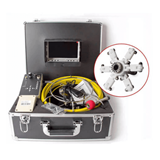
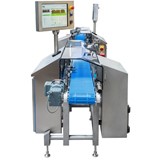
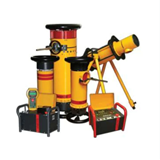

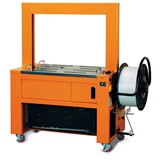


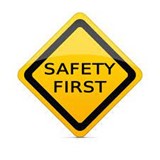
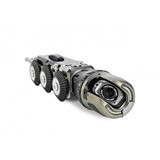
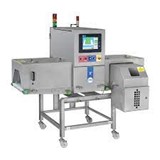


-205x205.jpeg)
